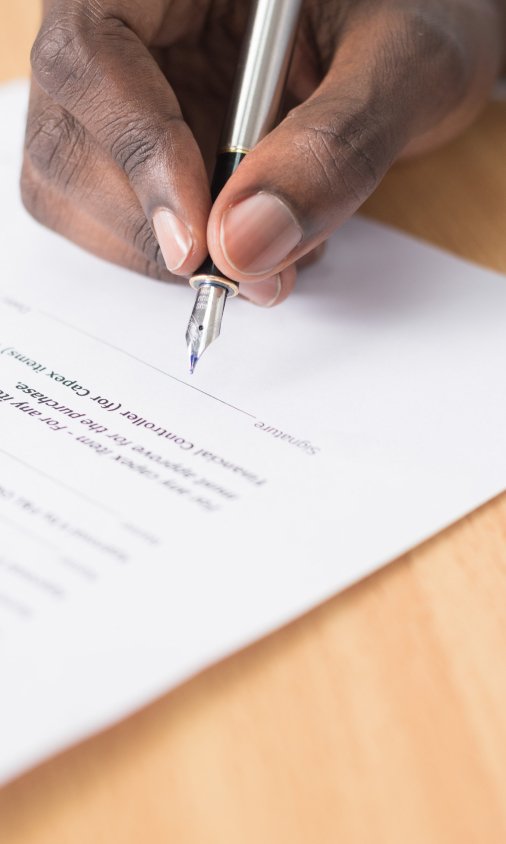
Online divorce is a super convenient and cost-effective option for those couples who have an uncontested divorce in Minnesota. First, you don't have to go anywhere and adjust to the usually busy schedule of a divorce lawyer. Secondly, it is cheaper than even the most budgetary flat-rate lawyer for uncontested cases.
So, how does the service work?
The couple fills out a special questionnaire based on the answers in which the system selects and fills out the necessary divorce forms. Then, within two business days, partners receive ready-made forms for download. This is very convenient, as you have access to the documents 24/7 and can make changes to them from any device. Also, the platform offers detailed filing instructions for each state, including Minnesota.
Contested Divorce
Online Divorce $299
DIY Divorce

The necessary forms for divorce may vary depending on the features of the case, the presence or absence of children, etc. So, according to The Judicial Branch of Minnesota, spouses who want to file for divorce without children in Minnesota must complete the following forms:
If the couple has common children, they must fill out the following forms:

To start divorce proceedings without a lawyer in Minnesota, spouses need to find and fill out several required forms. They can get the paperwork they need online (at The Judicial Branch of Minnesota site) or contact a local court clerk.
Also, ex-partners can request the required package of documents from the law library and seek help from CompleteCase.com to obtain completed forms. When filling out divorce papers in Minnesota, a couple should take into account the following main points:
The divorce process in Minnesota consists of the steps outlined below.
Grounds for Divorce
Initial Filing
Court Fees
Serving a Spouse
Finalizing a Divorce
Grounds for Divorce
Although Minnesota is considered a no-fault divorce state (the court does not require one spouse to blame the other for the divorce), this does not mean that the judge only grants a divorce to a couple at their request. The spouses must show the court why the divorce is necessary, even if both parties agree to the separation.
In Minnesota, ex-partners need to prove that the marriage has ended irrevocably and have no chance of reconciliation. This can be done if:
Initial Filing
In Minnesota, spouses need to find and fill out various forms to start divorce proceedings. Soon-to-be ex-partners can request a divorce packet online (at The Judicial Branch of Minnesota site), from the local court or law library.
If the couple has a Settlement Agreement, they can file a "Joint Petition for Dissolution of Marriage" (with or without children). Filing such a petition in Minnesota simplifies the process and saves money on filing fees. Also, there are separate forms for an even more straightforward divorce process called "Summary Dissolution."
Note that Minnesota allows couples to file divorce forms electronically. However, once the spouses do that, they have to use e-filing for any other documents they have to file for the rest of their divorce.
Court Fees
The petitioner needs to pay a fee to file divorce documents. The basic statewide filing fee is $365, but county district courts add small additional fees.
Serving a Spouse
The plaintiff must serve the defendant with copies of all documents they filed with the court. The claimant must have someone over 18 (friend, family member, or sheriff) personally serve the divorce forms directly to the respondent for personal service.
Finalizing a Divorce
If spouses filed a joint divorce petition in Minnesota, they might not have to do anything else to finalize the divorce. First, a judge will review the paperwork, including the Settlement Agreement. Then, the judge will sign the final divorce decree, and the couple will receive a notice in the mail that the divorce is final. Also, there is no waiting period in MN.

Since attorneys in Minnesota charge between $260 and $330 an hour, this service can be prohibitively expensive for many. Obviously, a divorce without a lawyer will cost many times less. However, before coming to a DIY divorce, the spouses must have a Settlement Agreement and make sure that their divorce is uncontested.
In the case of significant assets for division, the presence of children where the couple cannot agree on custody, domestic violence, etc., it is necessary to have a lawyer.
If all of the above does not apply to spouses and they have agreements on all points, it is more profitable and efficient to have a do-it-yourself divorce. However, despite its quick and efficient process, selecting and filling out divorce forms can cause stress and confusion.
A couple can always turn to CompleteCase.com for help. Within two business days, it will help generate the necessary paperwork based on the details of a particular case. Also, the service offers detailed and straightforward instructions for filing out in every state, including Minnesota.

Child Custody
There are two types of guardianship in Minnesota — physical and legal.
Physical custody is the daily care and control of the child (bathing, raising, preparing food for the child, etc.). Legal custody is the ability to make crucial decisions for a child. For example, these are issues related to education, religion, and health care.
In Minnesota, two parents can have joint physical custody of their children, which does not mean that children have to spend the same amount of time in each home. The only requirement is that the children live in each household for a set period of time.
Child Support
Child support is a monthly payment that a parent pays to cover raising a child. Both parents are financially responsible for the child. The parent with primary physical custody who takes care of the child most of the time will usually receive child support because the law assumes that the parent is already spending money directly on the child. The parent with less parental time usually pays child support.
In Minnesota, parents must pay child support until the child turns 18, but there are some exceptions. Payments stop when, for example, the child becomes emancipated — when they marry with the consent of their parents, enter the military, etc.
Minnesota does not have a waiting period like many other states. So, the couple can immediately receive a final court decree upon finding an irretrievable breakdown in an uncontested divorce. Also, the decree can be appealed.
However, many factors influence the duration of the divorce process: how quickly the plaintiff will serve all copies of documents to the defendant, whether one of the spouses will express disagreement about some point in the divorce, how busy the court will be, etc.
To obtain a divorce in Minnesota, spouses must meet the residency requirement.
If one of the spouses doesn't meet at least one of the above Minnesota residency requirements, they can:

How long will it take in Minnesota?
An uncontested amicable divorce in Minnesota can take four to six weeks to finalize. However, if the couple cannot agree on key issues, the process can take longer.
Can I get a free divorce in Minnesota?
Unlike classic divorces, where both spouses have to pay separate filing fees, Minnesota couples who use dissolution by joint Petition can split a single filing fee. If they can't afford to pay the filing fee, they can request a fee waiver.
How to file for divorce in Minnesota?
To begin a divorce in Minnesota, one spouse must fill out or write a Summons and Petition for Dissolution of Marriage. If the couple has a Settlement Agreement, they can file a "Joint Petition for Dissolution of Marriage" (with or without children).
How much does a divorce cost in Minnesota?
The minimum cost of an uncontested divorce in Minnesota is $365 (filing fee).
Our Customer Commitment